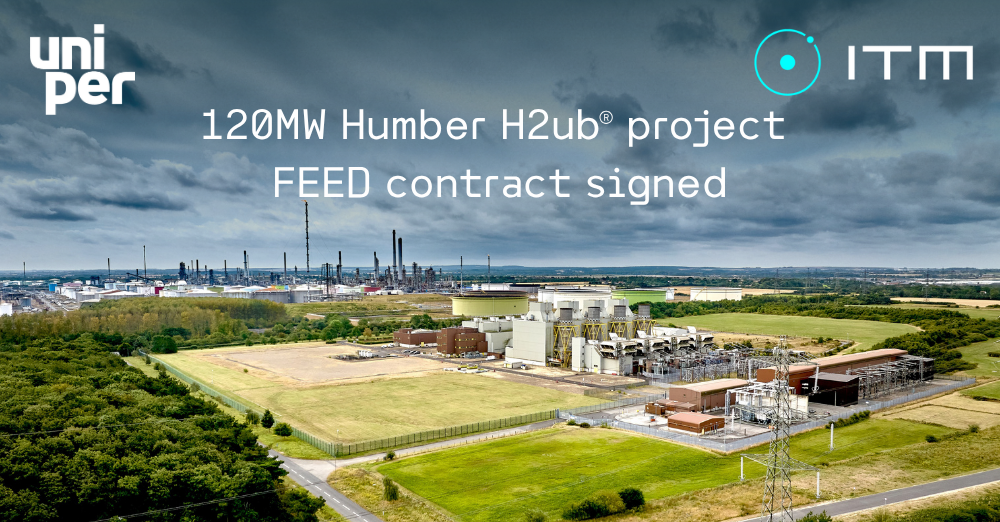ITM Power has signed the Front-End Engineering Design (FEED) contract for Uniper’s Humber H2ub®—a 120MW green hydrogen project shortlisted in the UK’s Hydrogen Allocation Round 2 (HAR2).
The Humber H2ub® is among the UK’s most closely watched hydrogen developments. Located at Uniper’s Killingholme site, the project is designed to produce green hydrogen via electrolysis powered by renewable electricity. If it reaches Final Investment Decision (FID), the plant is expected to be operational by 2029.
At its core, the project will integrate six of ITM Power’s 20MW POSEIDON core electrolysis modules—representing one of the largest modular deployments of PEM (proton exchange membrane) technology in the UK to date. According to ITM Power CEO Dennis Schulz, the project’s scale and strategic focus make it emblematic of the type of industrial decarbonization the UK aims to enable through its hydrogen roadmap.
The FEED agreement will allow both companies to refine engineering specifications, identify integration challenges, and progress permitting and procurement frameworks, with FID contingent on project economics and regulatory clarity.
The UK’s Department for Energy Security and Net Zero (DESNZ) launched HAR2 in April 2024, aiming to allocate support to low-carbon hydrogen producers through a contracts-for-difference (CfD) mechanism. While demand-side arrangements remain under development, the 120MW capacity of Humber H2ub® positions it well within the expected first wave of large-scale, blue-chip industrial hydrogen hubs under this scheme.
Critically, the project’s location in the Humber industrial cluster aligns with regional decarbonization priorities. The Humber region accounts for more than 40% of UK industrial emissions, largely due to refining, power generation, and chemical processing activity. As such, the development of local hydrogen production capacity is seen as a linchpin for meeting carbon budgets and unlocking complementary infrastructure such as carbon capture, storage, and hydrogen pipelines.
Although full commercial operations remain several years away, the FEED contract underscores that industry players are aligning capital, technology, and location to meet 2030 climate targets.
Stay updated on the latest in energy! Follow us on LinkedIn, Facebook, and X for real-time news and insights. Don’t miss out on exclusive interviews and webinars—subscribe to our YouTube channel today! Join our community and be part of the conversation shaping the future of energy.





